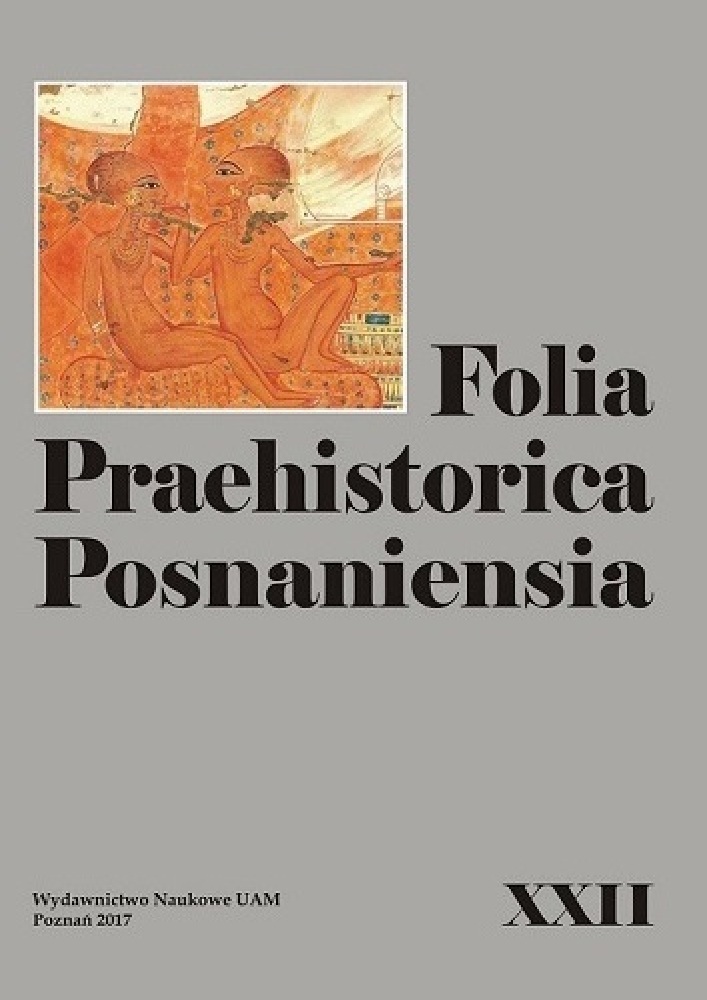Abstrakt
This paper present the work of Nick Kardulias concerning the Egean World – System In the Bronze Age. It is paradoxical that the application of the Wallerstein’s model is the most popular and the most useful in Bronze Age studies. In the current article I assess the Kardulias’ work, his worldsystems approach to Aegean societies in the third and second millennia BC. He writes that ] in this era of the studied area societies developed complex economies based on accumulation of substantial agricultural surpluses, craft specialization, and intricate distribution systems.
Bibliografia
Bass G. 1986 Bronze Age Shipwreck at Ulu Burun (Ka). 1984 Campaign. American Journal of Archaeology, 90, s. 269–296.
The Bronze Age Shipwreck at Ulu Burun. 1986 Campaign. American Journal of Archaeology, 93, s. 1–29.
Braudel F. 1977 Afterthoughts on Material Civilisation and Capitalism. Baltimore: John Hopkins University Press.
Chase-Dunn Ch., Hall T. D. 1991 Conceptualizing Core/ Periphery Hierarchies for Comparative Studies. W: Ch. Chase-Dunn, T. D. Hall (red.), Core/ Periphery Relations in Precapitalist Worlds (s. 5–44). Boulder: Westview Press.
Frank A. G. 1993 Bronze Age World Systems Cycles. Current Anthropology, 34, s. 383–429.
Gilman A.1981 The Development of Social Stratification in Bronze Age Europe. Current Anthropology, 22, s. 1–23
Kardulias P. N. 1999 Multiple Levels In the Aegean Bronze Age World-System. W: P. N. Kardulias (red.), World Systems Theory in Practice (s. 179–201). New York: Rowman and Littlefield Publishers.
Kardulias P. N. 2007 Negotiation and incorporation on the margin of world-systems: examples from Cyprus and North America. Journal of World – Systems Research XIII, 1, s. 55–82.
Kardulias P. N., Hall D. T. 2008 Archaeology and world- systems analysis. World Archaeology, 40(4), s. 572–583.
Kardulias P. N., Hall T. D., Chase-Dunn Ch. 2011 World-Systems Analysis and Archaeology: Continuing the Dialogue. Journal of Archaeological Research, 19, s. 233–279.
Polanyi K., Arensburg C., Pearson H. W. (red.) 1957 Trade and Market in the Early Empires. New York: Free Press.
Renfrew C. 1972 The Emergence of Civilisation. London: Methuen.
Renfrew C., Cherry J. F. (red.) 1986 Peer Polity Interaction and Sociopolitical Change. New York: Cambridge University Press.
Schortman E. M., Urban P. A. 1987 Modeling Interregional Interaction in Prehistory. W: M. B. Schiffer (red.), Advances in Archaeological Method and Theory (T. 11, s. 37–95). New York: Academic Press. 1992 Current Trends in Interaction Research. W: Schortman E. M., Urban P. A. (red.), Resources, Power and Interregional Interaction (s. 235–255). New York: Plenum Press.
Sherratt A. 1993 What would a Bronze Age System look like? Relations between Temperate Europe and the Meditterranean in Later Prehistory. Journal of European Archaeology, 1(2), s. 1–57.
Sherrat A., Sherratt S. 1993 The Growth of the Mediterranean Economy in the Early First Millenium BC. World Archaeology, 24, s. 361–378.
Weber M. 1976 The Agrarian Sociology of Ancient Civilisations. New York: Humanity Press Atlantic Highlands.
